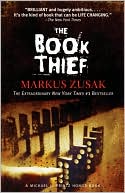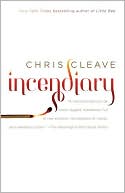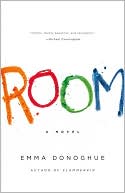By Julie
Not to drive voice and point of view into the ground, BUT . . .
Over the last month or two, I’ve read a few different books that really made it clear how selecting the right point of view can make all the difference.
Take a look at these novels if you haven’t already to see how the authors’ unique choices turned good plots and interesting characters into great ones.
A book from a dog’s point of view? Really?

I was resistant to reading The Art of Racing in the Rain. I kept seeing in stores for months and months, kept seeing it pop up on Facebook statuses and bestseller lists. But I had no interest in reading a book narrated by a dog. Pamela basically put it in my hands at our book trade during our annual retreat. This could have been “just” a story about a family struggling with terminal illness. And sure, the husband’s career as a race car driver was a unique twist. But then Garth Stein took it a step further by telling the story from a DOG’S point of view!
I’ve looked at my dog, Sophie, from a totally different perspective since. My mother was in a car accident the week before Christmas and has been in a hospital and skilled nursing facility for going on two weeks now. The first few days, our dog carried Mom’s slippers from her room in our home to the foot of the stairs every time we turned around, and we kind of laughed through our tears, but just patted her on the head. One evening after I returned from the hospital, I found one of Mom’s shoes in Sophie’s bed and I remembered Enzo, Stein’s close first-person … er, DOG narrator. So I took the time to explain to my obviously befuzzled and concerned dog that Mom was okay and would be home as soon as she was able to get around again.
Would I have done this before reading The Art of Racing in the Rain? Absolutely not. Now I think differently, and I keep Sophie informed about what’s happening that she might not otherwise understand. Just in case she “gets” it.
 A book narrated by Death? Can a character who really isn’t a “character” narrate a story?
A book narrated by Death? Can a character who really isn’t a “character” narrate a story?
Apparently, Markus Zusack thinks so. The Book Thief is told in omniscient point of view by a character we soon discover is the Grim Reaper, though Death is quick to remind us that humans created that metaphor for his personally heartbreaking occupation. Zusak took things a step further. I bet his publishers were a little on edge sending a book into the world with not only a daring form of narrator, but illustrations that verge on graphic novel. The story has been one of those that pops into my mind frequently since I finished reading it. It just doesn’t let go.
A novel written as a letter blatantly addressed to an internationally feared terrorist?

In Incendiary, the close, first-person voice of a young working-class woman in London whose life is transformed by an act of terrorism is compelling enough for her unique way of seeing and feeling and telling. But Chris Cleave makes it even a little more in-the-face by writing the story as if the young woman -- whose identity is made more universal by the fact that she’s never named -- pens a letter to the one she holds responsible for ripping her husband and young son from her life. The twist near the end of the story is mind boggling, but the voice Cleave created brings the experience in so close it haunts you.
And a story told from the point of view of a five-year-old? Is this adult fiction? I don’t know about this . . .
 And of course, you probably know I’m talking about Room, by Emma Donaghue, reviewed here recently by Kim. This story is chilling enough – a young woman who has raised her son in captivity, held in a tiny room where she does the best she can to create a normal life for her son. But by telling the story from the child’s close first-person point of view, the reader really gets an idea of how much he is loved by his mother and how much she has sacrificed to make his life the best she can under the circumstances.
And of course, you probably know I’m talking about Room, by Emma Donaghue, reviewed here recently by Kim. This story is chilling enough – a young woman who has raised her son in captivity, held in a tiny room where she does the best she can to create a normal life for her son. But by telling the story from the child’s close first-person point of view, the reader really gets an idea of how much he is loved by his mother and how much she has sacrificed to make his life the best she can under the circumstances.
I’ll be honest. It was a little bit of work for me to get into each of these stories, to find the rhythm of the narrators in my own brain, and to suspend disbelief, which shows what a risk it is for a writer to create such a unique voice. But I was hooked before long, and it is also clear that such a risk can pay off, not only in sales that climb lists and create author buzz (see also Cleave’s Little Bee with another gripping point-of-view character), but stories that live on in the reader’s mind for a long, long time. It makes me scrutinize the characters in the manuscript I recently completed as I read it through and begin to make revisions. I have two first-person narrators unlike any I've written before that I hope are unique enough to be a little risky, but real enough to grab my readers.
What about your narrators? How will they wow your readers?
Over the last month or two, I’ve read a few different books that really made it clear how selecting the right point of view can make all the difference.
Take a look at these novels if you haven’t already to see how the authors’ unique choices turned good plots and interesting characters into great ones.
A book from a dog’s point of view? Really?

I was resistant to reading The Art of Racing in the Rain. I kept seeing in stores for months and months, kept seeing it pop up on Facebook statuses and bestseller lists. But I had no interest in reading a book narrated by a dog. Pamela basically put it in my hands at our book trade during our annual retreat. This could have been “just” a story about a family struggling with terminal illness. And sure, the husband’s career as a race car driver was a unique twist. But then Garth Stein took it a step further by telling the story from a DOG’S point of view!
I’ve looked at my dog, Sophie, from a totally different perspective since. My mother was in a car accident the week before Christmas and has been in a hospital and skilled nursing facility for going on two weeks now. The first few days, our dog carried Mom’s slippers from her room in our home to the foot of the stairs every time we turned around, and we kind of laughed through our tears, but just patted her on the head. One evening after I returned from the hospital, I found one of Mom’s shoes in Sophie’s bed and I remembered Enzo, Stein’s close first-person … er, DOG narrator. So I took the time to explain to my obviously befuzzled and concerned dog that Mom was okay and would be home as soon as she was able to get around again.
Would I have done this before reading The Art of Racing in the Rain? Absolutely not. Now I think differently, and I keep Sophie informed about what’s happening that she might not otherwise understand. Just in case she “gets” it.
 A book narrated by Death? Can a character who really isn’t a “character” narrate a story?
A book narrated by Death? Can a character who really isn’t a “character” narrate a story?Apparently, Markus Zusack thinks so. The Book Thief is told in omniscient point of view by a character we soon discover is the Grim Reaper, though Death is quick to remind us that humans created that metaphor for his personally heartbreaking occupation. Zusak took things a step further. I bet his publishers were a little on edge sending a book into the world with not only a daring form of narrator, but illustrations that verge on graphic novel. The story has been one of those that pops into my mind frequently since I finished reading it. It just doesn’t let go.
A novel written as a letter blatantly addressed to an internationally feared terrorist?

In Incendiary, the close, first-person voice of a young working-class woman in London whose life is transformed by an act of terrorism is compelling enough for her unique way of seeing and feeling and telling. But Chris Cleave makes it even a little more in-the-face by writing the story as if the young woman -- whose identity is made more universal by the fact that she’s never named -- pens a letter to the one she holds responsible for ripping her husband and young son from her life. The twist near the end of the story is mind boggling, but the voice Cleave created brings the experience in so close it haunts you.
And a story told from the point of view of a five-year-old? Is this adult fiction? I don’t know about this . . .
 And of course, you probably know I’m talking about Room, by Emma Donaghue, reviewed here recently by Kim. This story is chilling enough – a young woman who has raised her son in captivity, held in a tiny room where she does the best she can to create a normal life for her son. But by telling the story from the child’s close first-person point of view, the reader really gets an idea of how much he is loved by his mother and how much she has sacrificed to make his life the best she can under the circumstances.
And of course, you probably know I’m talking about Room, by Emma Donaghue, reviewed here recently by Kim. This story is chilling enough – a young woman who has raised her son in captivity, held in a tiny room where she does the best she can to create a normal life for her son. But by telling the story from the child’s close first-person point of view, the reader really gets an idea of how much he is loved by his mother and how much she has sacrificed to make his life the best she can under the circumstances.I’ll be honest. It was a little bit of work for me to get into each of these stories, to find the rhythm of the narrators in my own brain, and to suspend disbelief, which shows what a risk it is for a writer to create such a unique voice. But I was hooked before long, and it is also clear that such a risk can pay off, not only in sales that climb lists and create author buzz (see also Cleave’s Little Bee with another gripping point-of-view character), but stories that live on in the reader’s mind for a long, long time. It makes me scrutinize the characters in the manuscript I recently completed as I read it through and begin to make revisions. I have two first-person narrators unlike any I've written before that I hope are unique enough to be a little risky, but real enough to grab my readers.
What about your narrators? How will they wow your readers?

No comments:
Post a Comment